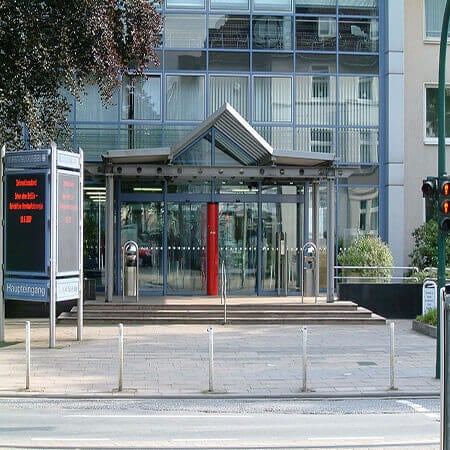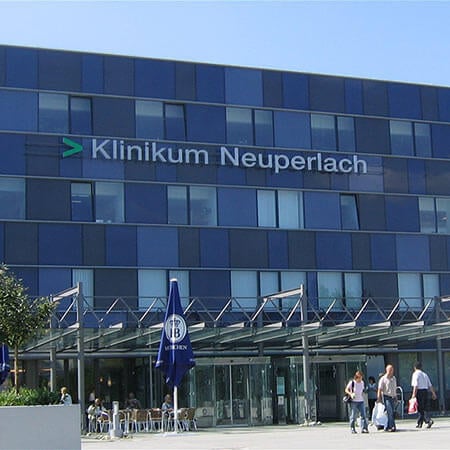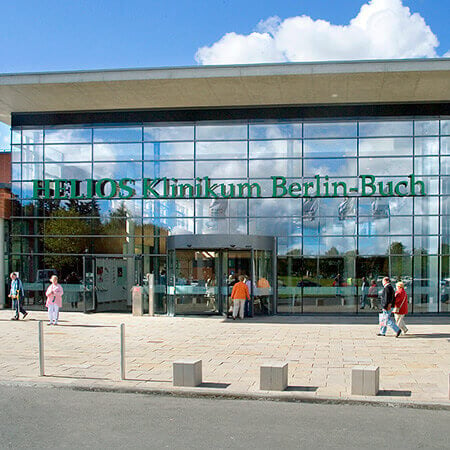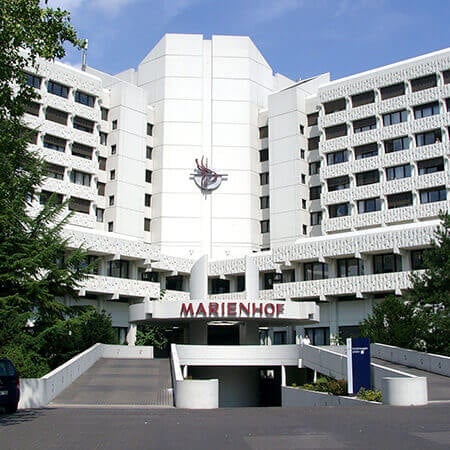Ventricular septal defect
Due to the difficulties associated with the organization of treatment in Turkey, Switzerland, South Korea and India, we are not currently processing requests to these regions.
If you are interested in treatment in Germany, please leave a request and our specialists will contact you as soon as possible.
Ventricular septal defect (VSD) is the most common type of congenital heart defect. It is characterized by one or more holes located between the left and right ventricles. VSD is the most frequent congenital heart disease. It accounts for 30-35% of the total number of cases.
The Booking Health portal presents 77 German clinics specializing in ventricular septal defect treatment
Show all clinics
Ventricular septal defect – Diagnostics
The main methods of diagnosing VSD are ECG (electrocardiogram) and echocardiography (ultrasound examination of the heart).
- ECG allows doctor to suspect in a child a ventricular septal defect based on the detection of signs of hypertrophy (increase) of the left ventricle. With long-term course of the disease, right ventricle hypertrophy can also occur. With a minor defect of the interventricular septum, the ECG may not reveal any changes.
- Echocardiography. Ultrasound with dopplerography can visualize the VSD and identify its location. Moreover, it can also reflect the pressure in the left and right ventricles. With the help of an ultrasound the doctor is able to detect other heart defects that can develop simultaneously with ventricular septal defect.
- MRI is a clarifying method. It is performed when there is a suspicion of the VSD, but this disease cannot be detected by echocardiography.
- Chest X-ray is an auxiliary method that allows revealing the indirect signs of VSD: cardiomegaly (enlarged heart) and increased pulmonary vasculature.
Best clinics for the ventricular septal defect diagnostics in Germany:
Ventricular septal defect – Treatment
Surgery is the main treatment method in the case of VSD. Treatment tactics for the patients with VSD are:
- Сhildren with pulmonary hypertension (pulmonary artery pressure is higher than 50% from the systemic one) and symptoms of congestive heart failure, which is not amenable with drug therapy. Surgery is performed in a short time, before the age of 3 months.
- Children with symptoms of heart failure and pulmonary hypertension. Their health condition can be improved by the usage of the medical treatment. Surgery is performed later, at the age of 6 months.
- Children with a small VSD (pulmonary artery pressure less than 50% from the systemic one). They suffer from the congestive heart failure symptoms. The conservative treatment is performed up to 5 years. Then, if the hole is not closed by itself (this occurs in 30-50% of cases), the surgery is performed.
- Children with a small VSD without symptoms of chronic heart failure. The conservative treatment is not administered, but at the age of 5 years the surgery has to be performed in order to eliminate the defect.
Conservative therapy (diuretics, cardiac glycosides) is prescribed for the symptomatic treatment of heart failure prior to surgery or life-long if the surgery is contraindicated.
Children, who fall behind in physical development during the first year of life, receive a high-calorie nutrient mixture that allows them to gain weight steadily.
Surgery is performed in different ways. Choice of specific technique is made on the basis of the VSD size and location, as well as clinic possibilities.
- Plastic reconstruction of the ventricular septal defect is carried out with usage of a heart-lung machine. The small defects are sutured. To close the medium and large defects, patches of synthetic materials or own pericardium are used.
- Transcatheter VSD plastic is an endovascular surgery which is carried out without using heart-lung machine. The occluder that will close the defect is introduced with the help of a catheter through the blood vessel trunk.
Best clinics for the ventricular septal defect treatment in Germany:


Hospital Neuperlach Munich

Helios Hospital Berlin-Buch
Ventricular septal defect – Rehabilitation
Cardiological rehabilitation improves the quality of life in patients with cardiovascular diseases. It increases the effectiveness of maintenance treatment in the case of chronic cardiovascular diseases, and also facilitates recovery after exacerbations. Rehabilitation is extremely important in case of cardiac surgical interventions.
Cardiological rehabilitation has the following aims:
- Restoration of heart muscle normal function
- Elimination of symptoms (for example, chest pain, dyspnea, etc.)
- Improving working capacity and providing patient with the opportunity to return to previous professional activities
- Improving physical stamina
- Prevention of exacerbations (including elimination of the risk factors)
- Consulting the patient on self-control and basic principles of self-help
- Improving patient's mental state, ability to "live with the disease"
Effective cardiological rehabilitation is performed only in countries with the developed medicine, as innovative medications, appropriate medical equipment and qualified healthcare professionals are available only there. Basic methods of cardiological rehabilitation include:
- Drug support for normalization of blood pressure, blood clotting, cholesterol level
- Dosed physical exercises under the supervision of an instructor, with a gradual increase in intensity
- Physiotherapy (darsonvalization, electrophoresis with medications, electrosleep, laser and magnetotherapy)
- Relaxing techniques (massage, aromatherapy, acupuncture, psychotherapy)
- Dietotherapy (control of salt and liquid amount, using spices, etc.)
- Modification of lifestyle (smoking cessation, body weight normalization)
In Germany, cardiological rehabilitation undergoes under the constant control of cardiologists, therapists and rehabilitation specialists. Programs are designed for 2 weeks. If necessary, they can last much longer. In this country, the patient is provided with qualitative care, accommodation in comfortable rooms and individually selected meals.
Rehabilitation programs in Germany show one of the best results in the world. Most patients successfully restore their working capacity and excellent health there. They remain physically active, return to the full social and family life.
Best clinics for cardiac rehabilitation in Germany:
Author:
The article was edited by medical expert, board certified Dr. Nadezhda Ivanisova. For the treatment of the conditions referred to in the article you must consult a doctor; the information in the article is not intended for self-medication!
Sources:
European Society of Cardiology
The cost of services includes
Here you can find the cost of treatment for this disease at the German University Hospitals. Leave a request and we will provide a free consultation with a doctor and will start organizing the whole treatment process.
The program includes the following:
- Issuing of an invitation for getting a visa for treatment as quick as possible
- Fixing an appointment at a time convenient for you
- Preliminary organization of a comprehensive examination and discussion of the forthcoming treatment plan
- Arranging transfer from the airport to the hospital and back to the airport
- Provision of interpreting services and services of a personal medical coordinator
- If necessary, assistance in the organization of further surgical treatment
- Provision of a medical insurance against treatment complications covering up to 200,000 euro
- Preparation and translation of medical records and recommendations from the hospital
- Assistance in the subsequent communication with your attending physician, including consultations on repeated X-ray images through the unique medical document management system E-doc




